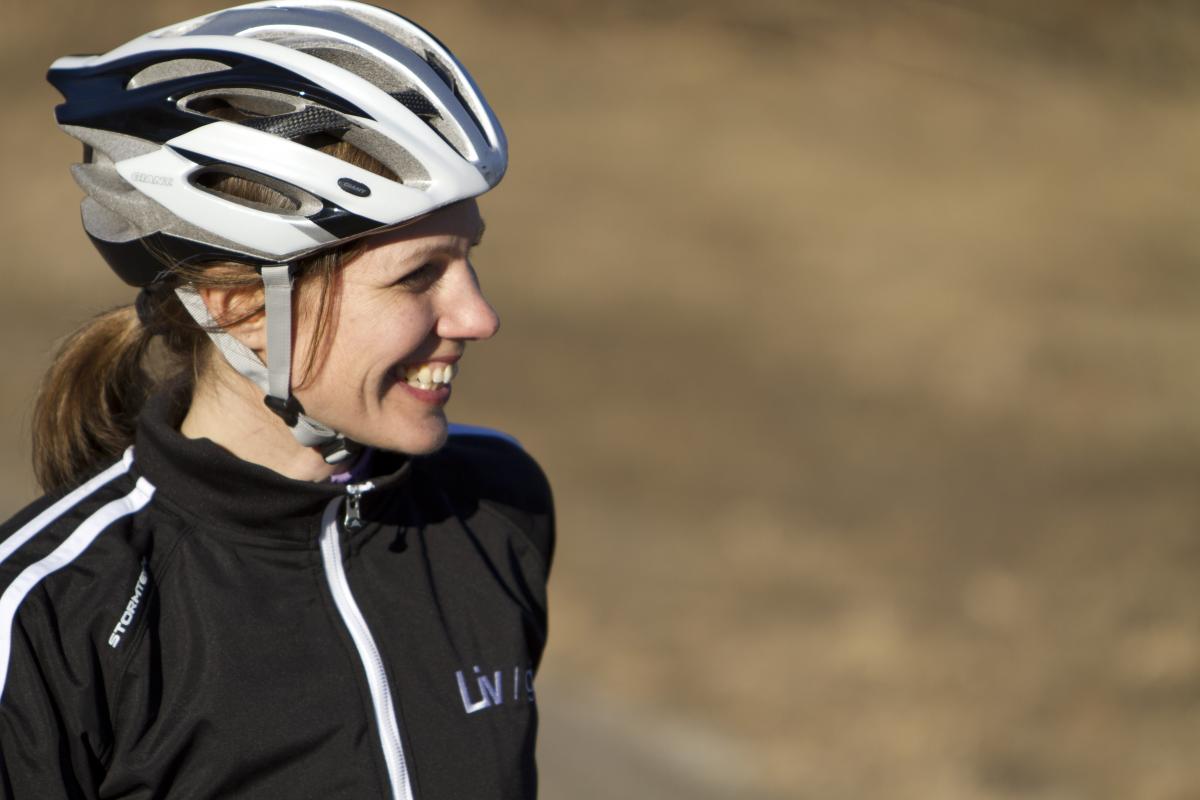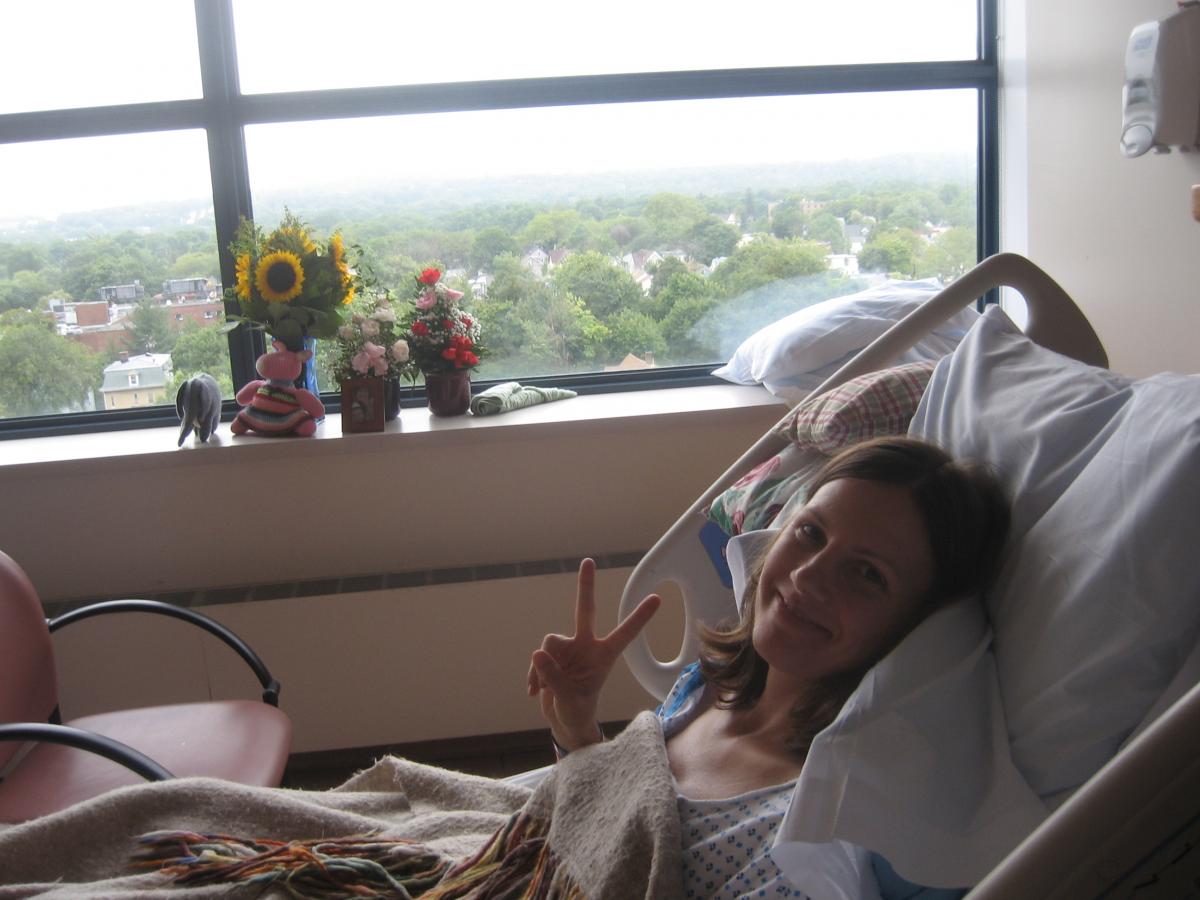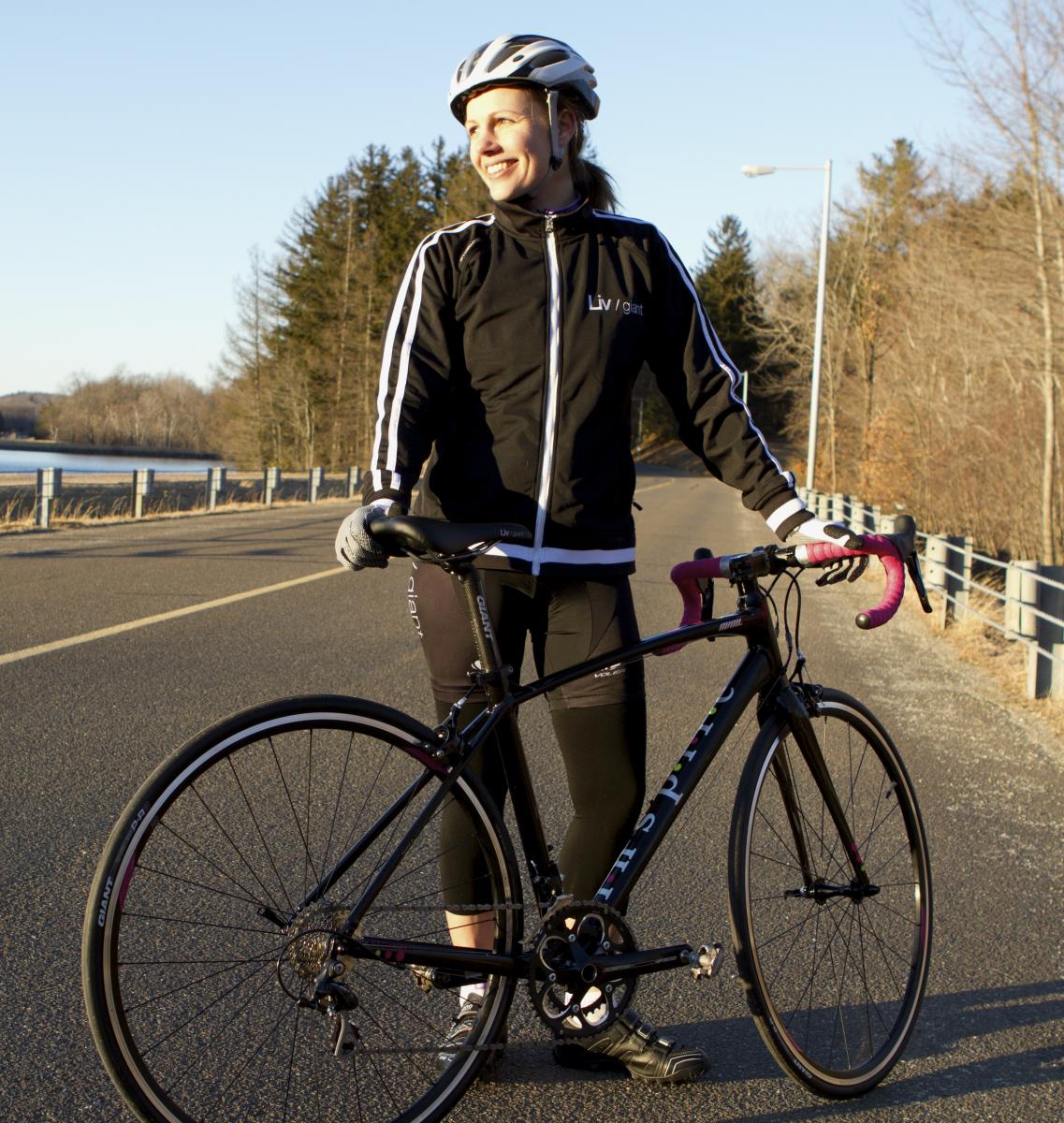DISCOVER YOUR LOCAL BICYCLING COMMUNITY
Find local advocacy groups, bike shops, instructors, clubs, classes and more!
Women’s Health: Emily Gresh
 For Emily Gresh, her health was her livelihood. As a professional ballet dancer, her body was her medium. When she got cancer, at age 39, that seemless relationship came undone.
For Emily Gresh, her health was her livelihood. As a professional ballet dancer, her body was her medium. When she got cancer, at age 39, that seemless relationship came undone.
As she underwent surgey and started the long road to recovery, bicycling rebuilt her strength and reconnected her to the joy of pushing her physical limits — and sharing her inspiration with others.
This year, Bike to Work Week coincides with National Women’s Health Week. As we’ve showcased in the past, bicycling is a powerful tool to advance health and this week we’re sharing diverse stories from women who have tapped into biking to overcome challenges, both physical and mental.
Here’s Emily’s incredible story, which was published in our American Bicyclist magazine in 2012.
During a 50-performance run of The Nutcracker, Boston’s snow-covered Beacon Hill held a timeless quiet within its cobblestone streets. As I rode home on my bicycle each night after those performances, the streets took me in, unnoticed and anonymously, after performing on stage in front of an audience of 3,000 people. The neighborhood offered brick and grey colors, muted tones, and a glow of lighted windows, while my life at the theater for those holiday weeks was a blur of bright confections: tutus, stage makeup, and sparkling tiaras.
It wasn’t only during December that I biked home through the streets of Beacon Hill. Throughout the year, my days as a professional ballet dancer were awash in hours of rehearsals and performances with other dancers. We faced the daily rigor of class. We pushed our bodies to their limits. We kept formality within every inch of our movement. But, as intense as dancing was, every time I threw my leg over my bike at the end of a long day, I was reminded of the permeability between work, life, and art. Bicycling kept things real in a world built on imagery and illusion.
One night, toward the end of my first year as a professional dancer, after a performance of Swan Lake in which I danced in the corps de ballet, I rode my bike home through Boston Common and stopped at midnight to watch the actual swans in the Frog Pond. Their presence at that hour, late in May and in the middle of a busy city, brought me face to face with a simpler beauty, removed from pointe shoes and the next day’s performance. The contrast settled gently, a swan’s nest within me was ready to hold the two parts of the evening warmly in my mind.
Perhaps it was that night that bicycling began setting down words within me. Dancing was always a first language; cycling became a second. The body is the pen and paper with which we originally write our memories. Laughter, tears, sweat: These are all first inscribed in physical text. We are always writing, much of the time unaware. We carry our bodies with us throughout our lives, whether we like them or not, whether we love and care for them or don’t, whether or not others tell us what wonderful instruments they are. Our bodies are marked by time and are nearly perfect keepers of time. The clocks within them tick on independent of the stories we think we have written for ourselves. Little did I know then that the connections and interpreting being done between my body, self, and bicycle would provide me with a pathway out of an excruciating time.
 Clock ticking, eighteen days after my 39th birthday, I was diagnosed with breast cancer.
Clock ticking, eighteen days after my 39th birthday, I was diagnosed with breast cancer.
I thought that the way I knew and pushed my body would be gone forever. I was sure that my body’s way of speaking within me would be permanently silenced. Under the threat of cancer, I realized just how much I loved the body I had, how dear it was, and how I did not want it changed or damaged by any hand.
Yet living, surviving, would require change.
I started looking for a soft landing, a refuge that would bring down the deafening clamor of illness, and take me to some semblance of a neighborhood in which I could find respite again. At the hospital, I thought of Beacon Hill and swans, as pen marks were drawn on my skin to line the path surgeons would follow. I said an inner good-bye to my body as I had known it. It didn’t answer me back. A sad silence went pulsing through my veins. A few minutes later, I was on the operating table and then unconscious for seven hours.
That surgery was followed by a second…which was followed by many minor procedures and months of rest. As I recovered, I told my friend James that I wanted to ride in a charity ride for young survivors of breast cancer — the Young Survival Coalition’s Tour de Pink. I told him the ride would take me 200 miles in three days and I’d have to start training. He replied simply: “You can do it.” Despite my doubts, I knew he was right.
James introduced me to Cedric, Brian, Jeff, Steve, Adam, Paul, Bill, and Jason. They all helped me train. They gave me a nickname, occasionally calling me “Swan,” and I felt my body run its pen over that name and underscore it. I heard from them that cyclists carry their shoes on the airplane when they travel to big races. It sounded like dancers who are sure to keep two pairs of pointe shoes with them when they are touring.
From these new friends, I learned about handmade bicycles and legends Dario Pegoretti and Richard Sachs, and the differences between those bikes and mass-produced ones. As they spoke about custom bike frames, I thought about tutus that had been built for me, how bodices had been shaped and costumes fit exactly to me, just as bikes are fit to riders. I thought of dancers’ shoes, Capezio’s, which come from a factory, and Freed’s, which are marked with a maker’s stamp. Translations between body, bicycle and dancing began to tear across pages again. Being around the friends I met through cycling felt like Beacon Hill or that midnight stop by the Frog Pond—a familiar place that I always wanted to ride through, even in the dark, even in winter, even at the twelfth hour.
Except for James, these riding friends had no idea that I was recovering from cancer. As I took longer and longer rides with them and learned more about their generosity — and the fact that my first road bike was heavy and had the rear brake dragging — I could put aside for awhile that cancer had ever happened to me. I found myself laughing again, even as my rides began to stretch over 50 and 60 miles. As the Tour de Pink closed in, my friends made sure that the trip would go smoothly. They assured me that I could ride 200 miles in three days, that such a thing was no problem for me.
 And then I did.
And then I did.
With that big ride of my first Tour de Pink behind me, I kept on biking, listening, and discovering the daily strengths of my body, alongside these new friends. I took rides on my own, as well, watching the colors of late September give way to early October. As the year took a deeper curve into October, I set my sights on a new challenge: a design contest open to cancer survivors, sponsored by Giant Bicycles and the Young Survival Coalition.
With the contest in mind, I sat in a coffee shop near Yale-New Haven Hospital, where I had been treated, and began to sketch out ideas. I used colored pencils to shade in a drawing and carefully wrote the word “inspire” in deliberate text on the bicycle’s down tube. For all of the writing-on-the-wall details about my body, I decided to put language on my bicycle. Inspire comes from the phrase “to breathe in.” This notion of inspire includes breathing in the most difficult, along with the most satisfying, to truly take in all that life brings, down to the depths of every ticking part of you.
The design I created subsequently won the contest and today I ride that bicycle. When I received the call from Giant about winning the contest, I felt the richness of neighborhoods I love and the corner of York and Elm Streets where I was standing. I was bathed in a tremendous sense of humbleness and appreciation for the struggles of others. Every time I ride my bike I find myself thinking about the difficult year behind me and the intensely grateful living that I have done in the year that followed.
For every Avail Inspire bike out there, there are thousands of stories of hardship, great love, and recovery. Mine is but one, among many.
I found the respite I was seeking when I was first diagnosed with cancer. My bicycle has become a place where cycling and dancing can settle in like lifelong swan mates; where cancer can lead to a greater willingness to trust in and enjoy one’s strength; where friendship is built on toughness as well as laughter; and where the good and the challenging find their way in.
I may have left Beacon Hill long ago and the quiet anonymity that I craved and found on those December nights. But, recovering from cancer I discovered that soft landing is still there for me on my bike: one ticking second to the next, body being pushed, pen madly scribbling away within me.